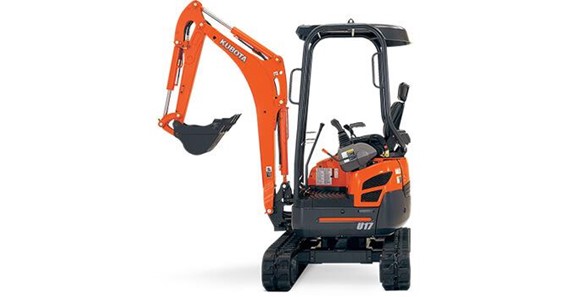Commonly used in the construction industry, excavators can be used in various other sectors as well. Excavators perform heavy-duty jobs that include digging, lifting and carrying tasks. These popular heavy construction or earthmoving vehicles typically include features such as an arm, boom, bucket, movable tracks and a rotating cab.
Excavators can be found on sites that involve demolition, land clearing, mining and trenching jobs. Picking the right type of heavy-duty machinery for the task requires knowing what you need before looking for a machine like a Kubota excavator for sale. Excavators come with a variety of features to perform specific applications and finding one for confined spaces requires knowing what specs to look for.
Read on to find out more!
3 Tips for Buying an Excavator for Confined Spaces
1. Know the Different Types of Excavators
Knowing the different types of excavators will help you make a well-informed decision when choosing the right machinery for tight or compact areas:
- Crawler excavators: A general-purpose excavator that comes in different sizes and can dig, demolish, trench and lift heavy items. It usually has an arm, boom and bucket in the front of the machine.
- Zero tail swing excavators: The body rotates within the tracks while maintaining balance and stability without compromising work output. This type of excavator is excellent for compact or heavily congested areas such as urban sites.
- Long-reach excavators: Built with an extended arm and boom, this equipment gives a longer working range for getting to hard-to-reach areas. This type of excavator is good for deep trenching and underwater digging.
- Wheeled excavators: Instead of running on tracks, these excavators have wheels. Wheeled excavators can be driven from site to site which is a huge benefit compared to those that run on tracks and have to be transported on trailers.
The most popular type of heavy machinery used for safe excavation work in smaller or congested spaces are excavators with reduced or zero-tail swings. Operators don’t have to stress about what’s behind or in front of them and can easily manoeuvre the vehicle on site.
2. Look Out for Different Excavator Attachment Tools
Excavator attachment tools are used to maximise the performance of the heavy-duty machinery. Upgrading your excavator with the right attachment tools will get the job done efficiently, quickly and safely.
Here are some examples of excavator attachment tools:
- Bucket: Slim buckets are used for digging while wider and smoother designs are used for carrying or scooping objects.
- Thumbs: Used to improve the bucket capacity especially when excavating bigger objects.
- Augers: Popular for landscaping jobs, this attachment uses hydraulic spiral blades to dig holes faster.
- Hammers or hydraulic breakers: This tool is used to demolish structures and solid surfaces such as pavements.
- Shears: These are used to demolish steel structures, for breaking up recycling material and for cutting scrap materials such as metal and wires.
- Rippers: Used to speed up demolition tasks particularly when working with strong materials and frozen surfaces.
The right excavator attachment tools make light work of heavy-duty jobs under various conditions. Excavator operators can get the job done conveniently without compromising on safety. Identifying the right attachment tools improves work performance as well as job efficiency on-site while getting the tasks done timeously as well.
3. Excavator Sizes: Pick the Right Size for Confined Spaces
Larger general-purpose excavators are often favoured for projects that require heavy hauling and greater power to get the job done properly. But, does bigger mean better when doing excavating work in confined spaces? In many situations, the answer is no – the bigger the excavator the more space you need to operate it safely and efficiently.
Mini- or midi-excavators are your best options for working in tight or heavily congested areas. They can be easily manoeuvred in small spaces and around objects without compromising work performance. The most common feature of this excavator type is that it has reduced or zero tail swing.
Compact mini-excavators weigh below five tonnes and are best suited for softer terrain and projects that don’t require much lifting and carrying. They’re good for precise digging and are a popular choice for landscapers. Fuel economy is another great feature of these smaller excavators!
Midi-excavators weigh between five and ten tonnes and have more power and capacity than the mini version but are still perfect for compact and confined spaces.
Click here – 6 Top Reasons Why Investing in Quality Ratchet Tie-Down Straps is a Must
Final Thoughts
Picking the right excavator for confined spaces entails knowing what type of tasks you want done on-site. With this information in mind, explore the different excavator types available on the market. Taking note of features such as horsepower, swing tail, track rollers and fuel economy will help you make the right choice for your projects in small spaces.
Size does matter and when looking for a 1.7 tonne excavator for sale make sure it can be fitted with attachment tools to improve work performance in confined spaces. This way, you know you’ve got a piece of heavy machinery that’s efficient and saves you time.

